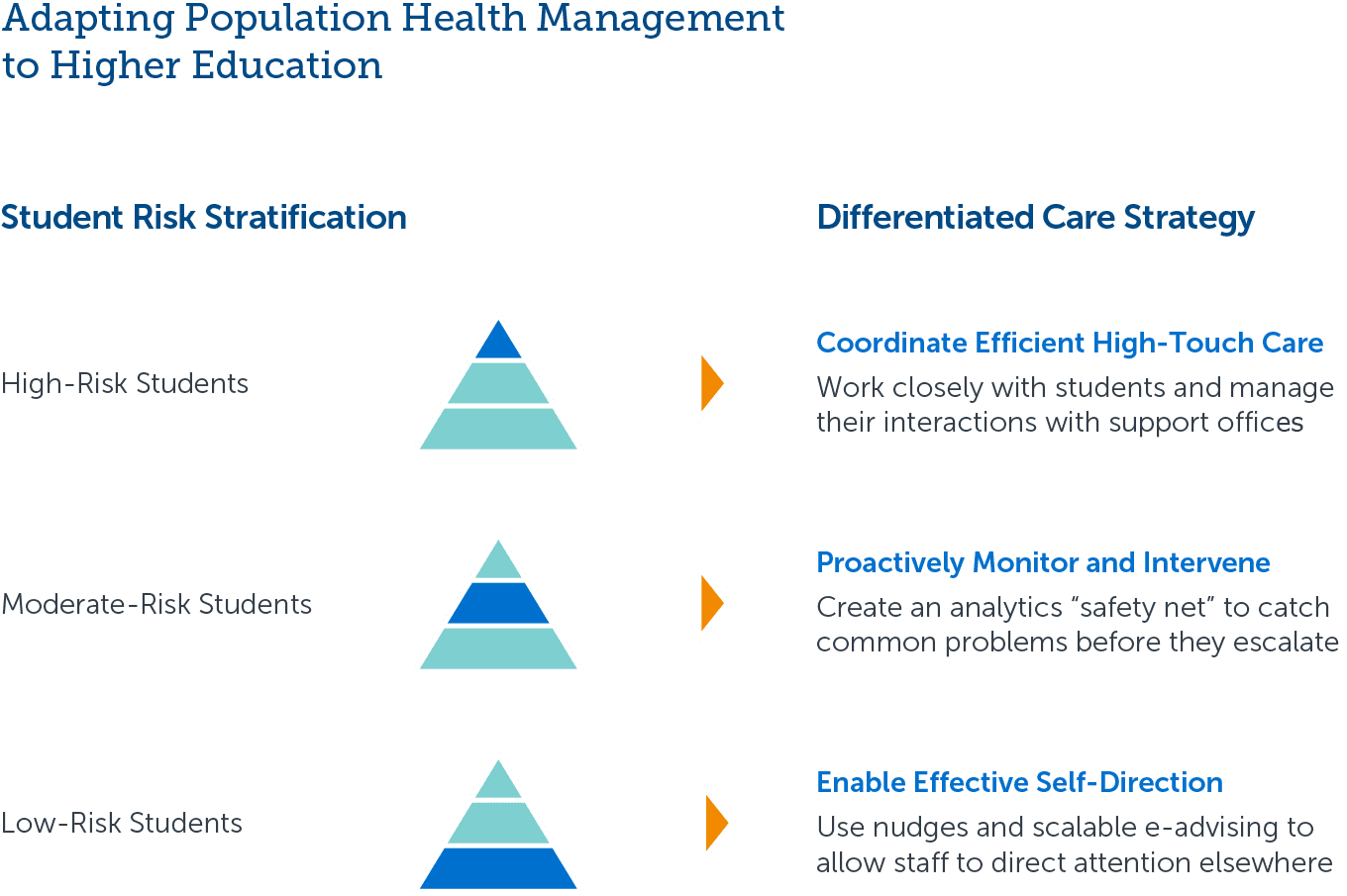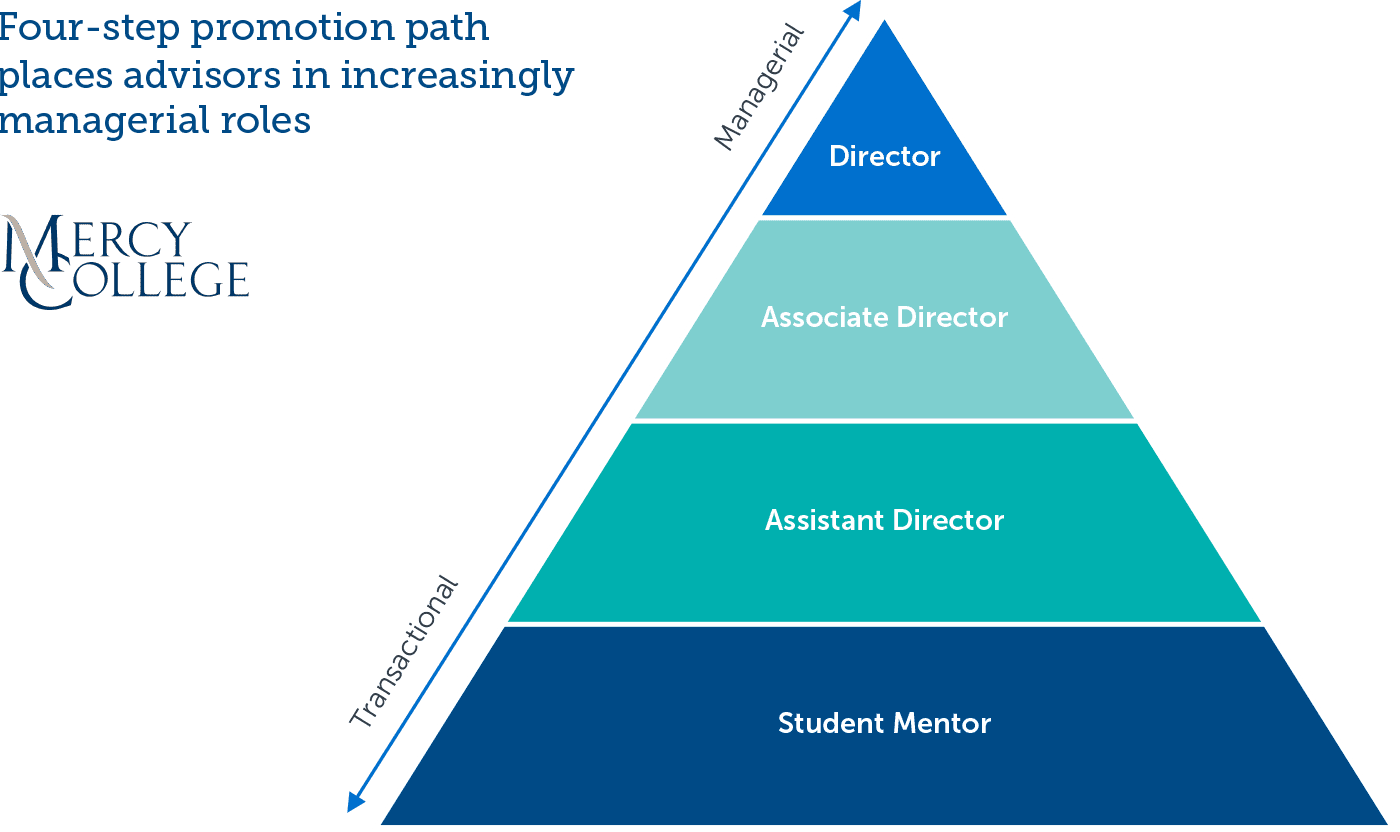Develop a Student-Centered Academic Advising Model
To make advising more proactive and individualized with limited resources, leading institutions in student success have adopted two principles from health care: Population health management and coordinated care. The population health management approach relies on analytics to sort students by their likelihood to stop out. Advisors can use this information to prioritize their time toward students with rising risk instead of only focusing on those with urgent, critical needs. Coordinated networks of advisors, faculty, and other student support leaders form teams that can solve the most complex needs that some students have in their courses, finances, and personal wellbeing. Focus on these two components to ensure students get the right advising support when they need it most, then create assessment and incentive strategies that reinforce best-practice models of advising.

Promote proactive outreach to consistent advising caseloads
Student-centered academic advising requires assigning each student to a specific advisor so that students will always know who to contact with advising questions, rather than having to navigate confusing processes or work with advisors who don’t know their unique history and needs.
The best advising models shape caseloads around common pathways of major migration, so that students and advisors can build a relationship over time without disruptive advisor changes.
Though every student success leader wishes they could have smaller advising caseloads, advisors can most effectively balance their time across their caseloads if they know how attrition risk differs for each student and have the tools to proactively reach out when students show early signs of need.


Now that you have the best practices on proactive outreach

Support students holistically across multiple campus units
Successful student-centered academic advising, especially for students with complex needs, relies on collaboration among multiple offices. These offices include advising offices, academic units, tutoring, financial aid, resident advisors in housing, athletics, wellness, and multicultural student offices.
A system of shared case notes (with appropriate privacy settings) helps ensure that each office gets a holistic picture of each student’s needs. Cross-training advisors, and even setting up cross-unit liaisons, helps ensure that advisors in particular are equipped to spearhead communication across offices.

Now that you've learned the principles of coordinated care, develop a strategy for each unit

Structure incentives for advisor growth and success
The best way to ensure advising quality and retain high-performing advising staff is to create a viable career ladder with performance metrics and incentives based on student outcomes. Advisors should have annual evaluations focused on their role in student performance, engagement, degree progress, faculty interaction, access to financial support, and career development.
Advisors who are particularly effective in supporting students can be elevated to managerial roles. These advising managers not only oversee advisor training and evaluation; they also help mediate and communicate among the central administration, academic units, and frontline academic advisors.


Now that you've read the best practices on advisor accountability and performance

This resource requires EAB partnership access to view.
Access the roadmap
Learn how you can get access to this resource as well as hands-on support from our experts through Strategic Advisory Services.
Learn More